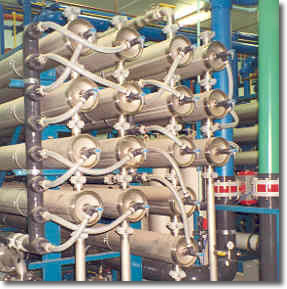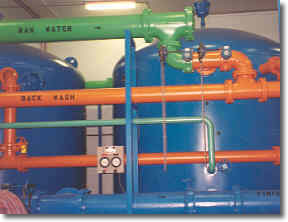Drinking Water Protection
- Drinking Water Protection Home
- About Us
- A-Z Index of Contaminants in Water
- Community Public Water Supply
- Drinking Water Grants and Loans
- Drinking Water Institute
- Drinking Water in Schools and Child Cares
- Drinking Water Revolving Fund
- Laws and Rules
- Noncommunity Public Water Supply
- Source Water Protection
- Water Operator and Certification Training
- Drinking Water Protection Contacts
Related Topics
- Annual Reports
- Drinking Water Risk Communication Toolkit
- Drinking Water Protection External Resources
- Fact Sheets
- Forms
- Invisible Heroes Videos: Minnesota's Drinking Water Providers
- Noncom Notes Newsletter
- Sample Collection Procedures (videos, pictures, written instructions)
- Waterline Newsletter
Related Sites
- 10 States Standards
- Clean Water Fund
- Health Risk Assessment – Guidance Values and Standards for Water
- Minnesota Well Index
- Water and Health
- Wells and Borings
Environmental Health Division
Lincoln-Pipestone Tackles Nitrate
with New Reverse-Osmosis Plant
From the Spring 2000 Waterline
Quarterly Newsletter of the Minnesota Department of Health Public Water Supply Unit, Waterline
A complete list of feature stories can be found on the Waterline webpage.
“Good water is hard to find down here,” says Jay Stuefen, the operator for the Holland Treatment Plant for Lincoln-Pipestone Rural Water System (RWS) in southwestern Minnesota. “It’s the feeling of our board that, ‘It’s our business to supply people who need it with good water.’”
Rural water systems were established in the 1950s for exactly that purpose—to supply good water to people who need it. The first rural water systems appeared in Minnesota in the 1970s with three in the northwestern part of the state and three, including Lincoln-Pipestone, in the southwest corner, where water is an often hard-to-find commodity.
Lincoln-Pipestone now provides water to approximately 2,800 rural connections and wholesale service to 26 communities. The system covers about 2,600 square miles, extends 100 miles north to south and 40 miles east to west, and encompasses all or portions of seven counties with three well fields located throughout the service area: the Holland Water Source, approximately five miles west of the city of Holland in Pipestone County; the Verdi Water Source, west of Verdi; and the Burr Water Source, west of Canby in Yellow Medicine County.
As is the case with other water systems in the area, Lincoln-Pipestone RWS constantly faces challenges with regard to both water supply and quality. To deal with the supply concern, Lincoln-Pipestone became a partner in the Lewis & Clark Rural Water System Project, which will divert water from the Missouri River at Vermillion, South Dakota, and deliver it to project members in South Dakota, Iowa, and Minnesota.
A quality issue that has plagued Lincoln-Pipestone in recent years has been high levels of nitrate in some of the wells in the Holland well field, which has five wells that pump out of an unconfined sand and gravel aquifer. At the land surface is an old stream channel, a trench carved into clay and backfilled with sand and gravel. According to Bruce Olsen, head of the Minnesota Department of Health Source Water Protection Unit, this is a common phenomenon in southwestern Minnesota. “It can yield lots of water, but it is vulnerable,” Olsen said of the aquifer.
Water quality in the Holland well field varies considerably from well to well. Two of the wells have produced high nitrate levels while the other three are high in manganese (with one of the high-manganese wells also being a cause of concern for nitrate). In the summer of 1997, Lincoln-Pipestone RWS exceeded the maximum contaminant level of 10 parts per million for nitrate, requiring corrective action.
Lincoln-Pipestone entered into a compliance agreement with MDH as both parties took steps to address the situation. MDH convened an interagency workgroup to go beyond dealing with just the exceedance and to study the larger problem of nitrate nitrogen contamination in drinking water. The group, chaired by Bruce Olsen and containing representatives from the Minnesota Department of Agriculture, Minnesota Pollution Control Agency, the Board of Water and Soil Resources, and the Minnesota Department of Natural Resources, ultimately recommended a multi-pronged approach with strategies ranging from wellhead protection to best management practices, the latter involving the study of ways of reducing nitrogen application—which could in turn reduce nitrate contamination resulting from crop production—without major yield reductions.
Meanwhile, Lincoln-Pipestone RWS worked with its engineer—DeWild Grant Reckert and Associates Company of Rock Rapids, Iowa—to explore treatment options to reduce the nitrate levels.
Darin Schriever, a staff engineer with DeWild Grant Reckert and Associates, said they first looked at conventional ion exchange with a salt brine for regeneration, a process similar to the one successfully used by the nearby cities of Ellsworth and Adrian to deal with nitrate problems. However, Lincoln-Pipestone had no place for the waste, which thus eliminated this method from consideration. They then studied a new technology, ion exchange with carbon dioxide regeneration, a process that would have required pilot testing since the technology hadn’t been fully proven in this area.
Rather than move ahead with pilot testing of the ion exchange, the group turned to membrane processes and considered both reverse-osmosis (R/O) and electrodialysis reversal. “We were going to bid both competitively,” said Schreiver, “but they would have required a different plant layout, so we would have needed different plant designs to accomplish that. In the end, we decided to go with R/O.”
Because of the different quality of water from the various wells in the Holland well field—with the high-nitrate wells generally low in manganese and the low-nitrate wells high in manganese—it was decided to install two treatment trains in the new plant.
Water from the high-manganese wells is directed to three 12-foot diameter pressure filters with greensand media. Total filter capacity is 1,020 gallons per minute (gpm). Potassium permanganate and chlorine are used for oxidation.
Through a separate supply line, water from the high-nitrate wells is directed to two 400-gpm reverse-osmosis units. (If necessary, the pressure filters can be used for iron and manganese pre-treatment of water before it enters the R/O membranes.)
Each of the R/O units allow for three passes of the water—through 8 membrane vessels in the first pass to 5 vessels to 3 vessels—with a projected recovery rate of 80 percent. Each vessel contains five membrane elements. The dual units allow for redundancy so that the reverse-osmosis treatment will not be interrupted if one of the units is out of service because of maintenance or other reasons.
 |
 |
|
Each of the reverse-osmosis filter units allows for three passes and have a projected recovery rate of 80 percent.
|
Water with low nitrate levels goes through pressure filters to reduce manganese.
|
The R/O treatment sequence consists of a booster pump with variable frequency drive sending the raw water from the wells through a one-micron cartridge filter to remove any particulates that could clog the R/O membranes. After an anti-scalant chemical is injected, the water goes to the main R/O pressure pump that allows the elements to operate at a primary membrane pressure of 200 pounds per square inch.
Next is the reverse-osmosis treatment, with side-entry pressure vessels and eight-inch diameter membrane elements. The system was designed with an automatic permeate flush, and caustic soda is added to adjust the pH of the permeate after the water has made its passes through the three sets of membrane elements. At this point, the water is blended with the water from the pressure filters and sent to the ground storage reservoirs.
Lincoln-Pipestone RWS is only the second community water system in the state to use reverse-osmosis. In 1998, the city of Madison—approximately 70 miles north of Lincoln-Pipestone’s Holland Treatment Plant—installed an R/O system to deal with sulfates, hardness, and iron and manganese.
Construction on the Holland Treatment Plant began in April of 1999 with the reverse-osmosis system going on-line on Friday, October 29.
Go to > top.